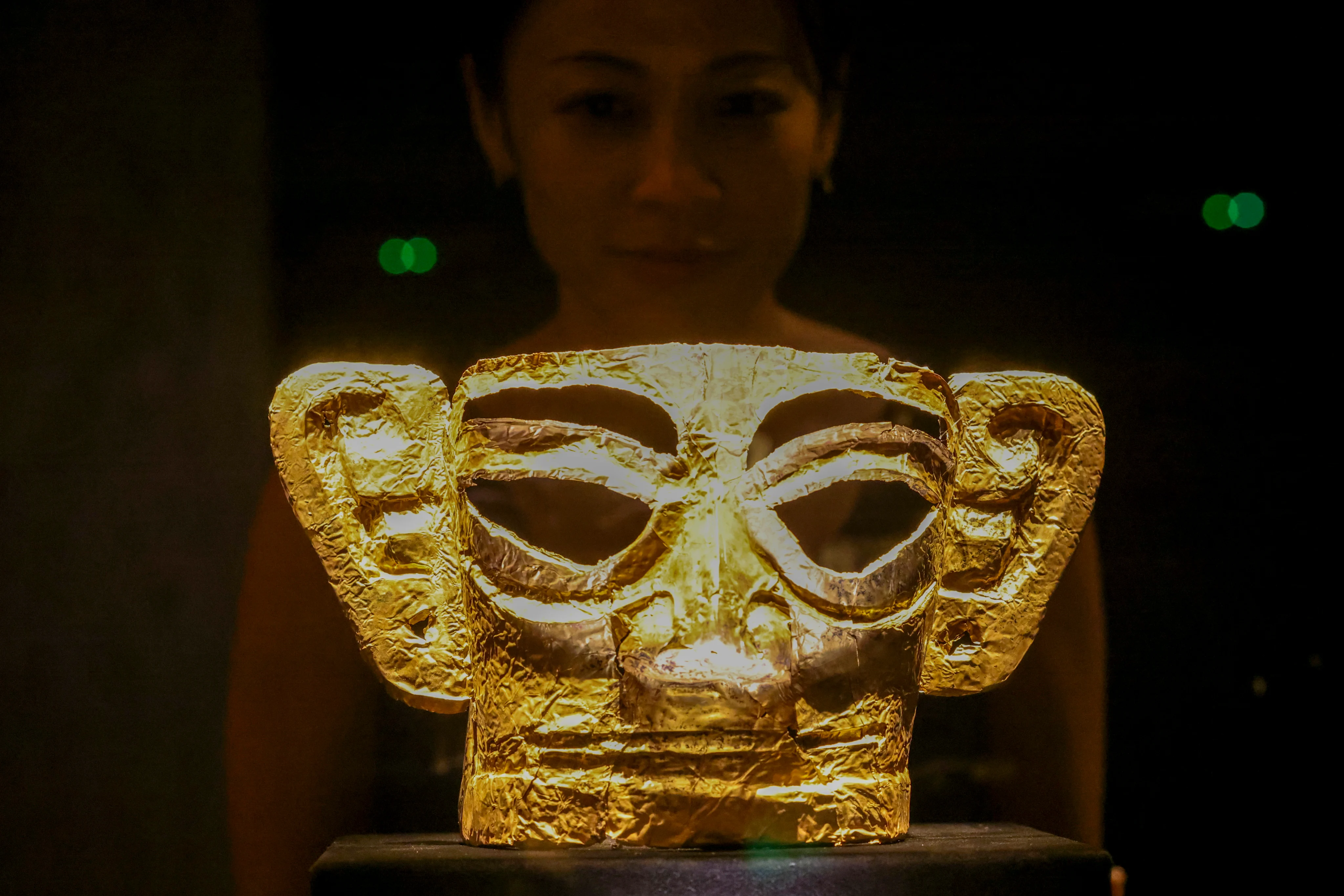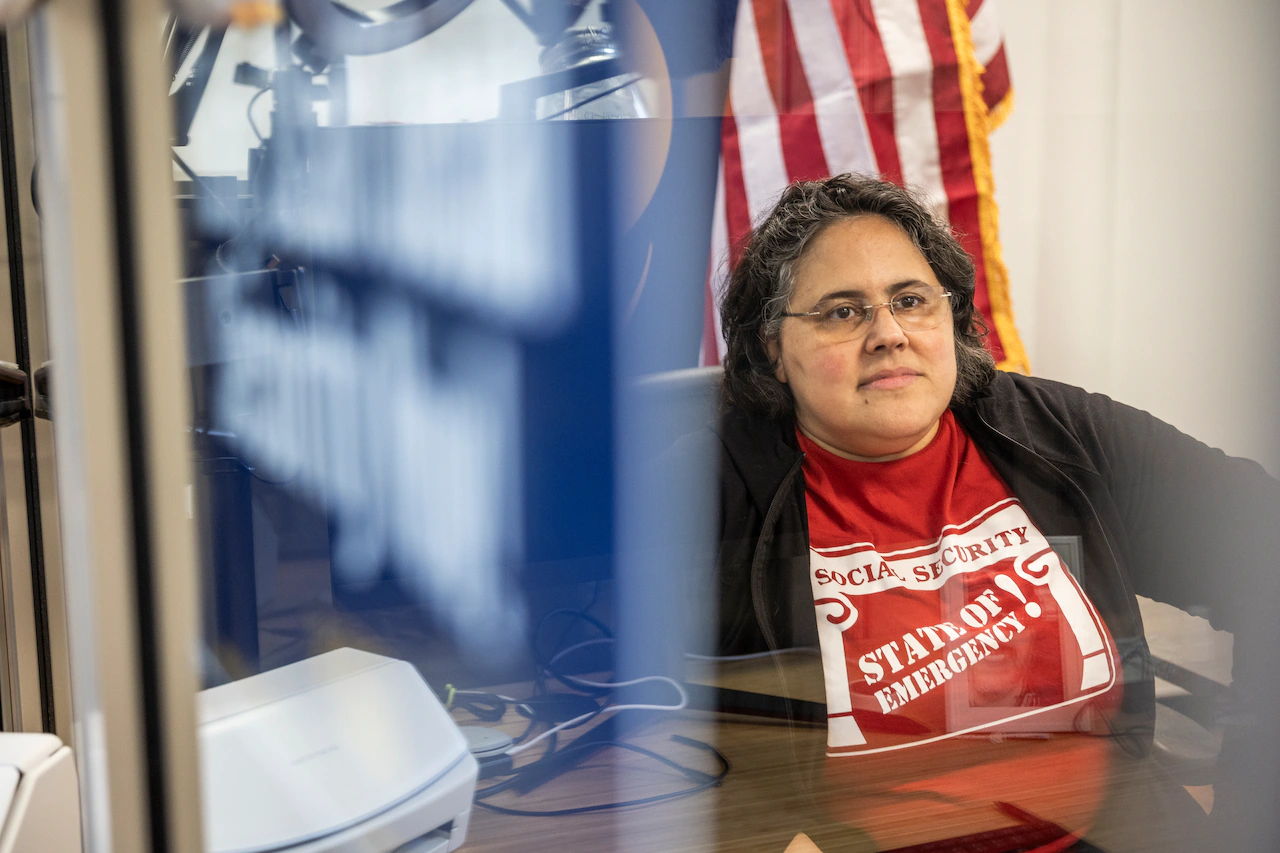By Xinlu Liang
Copyright scmp

China’s Sanxingdui archaeological site – considered a cornerstone of early Chinese civilisation from 4,500 years ago – is pioneering digital exhibitions to show a broader international audience its immense collection, including top national treasures not permitted to travel overseas.
Yu Jian, deputy director of the Sanxingdui Museum in southwestern China, said the institution planned to show its artefacts at an international exhibition next year.
Final plans for the exhibition required state approval, Yu told reporters last week at the museum in Guanghan, Sichuan province.
While many of Sanxingdui’s most iconic artefacts are designated top national treasures and forbidden from leaving China, immersive technology can help overcome that hurdle.
In addition to its main artefacts exhibition, the museum is actively promoting digital exhibitions, replicas and high-quality photo exhibitions to be displayed in museums around the world, Yu said.
Sanxingdui – one of the most important archaeological discoveries of the 20th century – is considered a cornerstone of early Chinese civilisation and is at the heart of the mysterious Shu kingdom, dating back around 4,500 years.
Discovered in the late 1920s and excavated extensively since the 1980s, the site has yielded more than 17,000 artefacts, including numerous bronze masks with exaggerated facial features.
One of the most iconic displays, the bronze No 1 Sacred Tree, is graded a top national treasure and will never leave mainland China.
No discernible language or text has ever been found on the works, deepening the historical fog surrounding Sanxingdui.
“Our VR [virtual reality] display is particularly popular with young audiences,” Yu said of an exhibit that allows the museum to show not only the artefacts but also the painstaking excavation and conservation process.
Themed exhibitions centring on the Shu kingdom have travelled to more than 20 cities around the world in past decades, but digital elements and advanced technology are now helping to create a more immersive and interactive experience for audiences beyond mainland China.
Successful digital exhibitions have been held in Hong Kong, Macau, Qatar and the United States.
A signature exhibition in June at the UN headquarters in New York featured artefacts from Sanxingdui and the nearby Jinsha site, which represents a later period of the Shu kingdom, around five to eight centuries after Sanxingdui culture.
Featuring hi-tech elements – such as naked-eye 3D projections, VR simulations and floor-to-ceiling animated displays – the exhibit digitally recreated the Shu natural environment and artefacts to explore sun worship across civilisations.
According to Yu, numerous artefacts at Sanxingdui show that ancient people shared a common worship of the sun and nature, which he said was a “universal concept in human civilisation”.
International exchanges and exhibitions could use themes such as sun worship to have a cultural dialogue and make comparisons with other civilisations worldwide, he said.
Sanxingdui’s efforts to exhibit abroad are part of China’s larger cultural and archaeological ambition to bolster national confidence and project soft power, at a time when the country’s significant discoveries appear to be overlooked by Western media and the public.
A recent study led by Harvard scholars found that archaeological work from Israel, Britain and Australia received around three times more media coverage than Chinese findings.
Researchers analysed 1,155 papers published between 2015 and 2020 for the study, which was published in July in the peer-reviewed Science Advances journal.
Although China’s archaeological research output was the third highest globally – after the US and Britain – it received among the least coverage from Western media, the study said.
Archaeological findings at Sanxingdui in 2021 received muted attention in the West, in stark contrast to the widespread media coverage given to the Egyptian Aten excavation just two weeks later.
The New York Times, for instance, gave more than 10 times as much coverage to Egyptian archaeology as it did to Chinese studies, which highlighted systemic bias and neglect, the study authors argued, while calling for action to diversify archaeology coverage.
The Sanxingdui and Jinsha sites are joint applicants for Unesco World Heritage status, a key project in China’s “14th five-year plan” for cultural preservation.
Meanwhile in Sichuan, the museum and several local research institutes have been hosting national and international seminars to further academic exchanges.
Yu said the museum was also actively fostering cross-cultural dialogue by hosting comparative exhibitions, such as a recent show with Greek artefacts, to place Sanxingdui within the context of “contemporaneous global civilisations”.
Given the lack of written records, one of the most innovative strategies to showcase the richness of Sanxingdui is through cultural and creative products.
“The Sanxingdui exhibition is remarkable, but a notable flaw is that no written records have been discovered there,” said Lin Wei, head of the museum’s cultural industry department.
This limited the ability to interpret Sanxingdui culture with the same depth as other Chinese dynasties, such as the Qin (221-207BC) or Qing (1644-1911), which had extensive historical documentation, he said.
“Therefore, beyond traditional artefact analysis, innovative methods like cultural and creative products are vital.
“These products combine ancient culture with modern design, making Sanxingdui’s heritage more vivid and accessible, serving as a powerful way to promote and transmit its culture as more than just merchandise but as a means of cultural innovation.”
This approach has proven successful. Lin said a team of more than 100 people had developed a line-up of 2,700 products – from “archaeological blind boxes” to bronze mask ice creams and figurines – generating 200 million yuan (US$28 million) in sales last year.
He added that the items served as a “final exhibition hall”, travelling with artefact collections to create a lasting, accessible impression.



